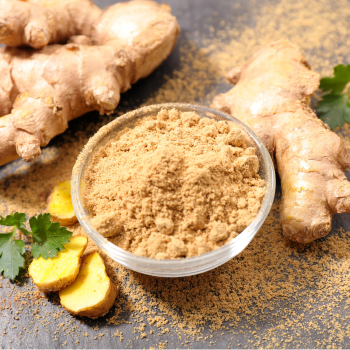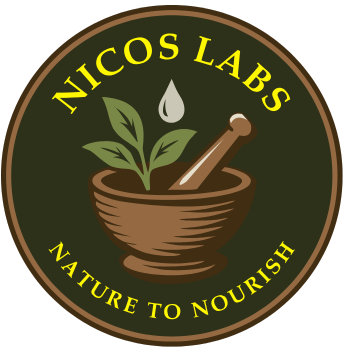🌿 Zingiber officinale, widely known and used both in Ayurveda and modern herbal systems:

Common Names:
English: Ginger
Sanskrit: Śuṇṭhī (dry), Ārdraka (fresh)
Hindi: Adrak (fresh), Sonth (dry)
Family: Zingiberaceae
Part Used: Rhizome (fresh or dried)
🌱 Plant Description
A perennial herbaceous plant with:
- Thick, knobby underground rhizomes
- Long narrow leaves
- Greenish-yellow flowers
Native to South and Southeast Asia but cultivated worldwide.
🔬 Key Active Compounds
| Compound | Function |
|---|---|
| Gingerols | Anti-inflammatory, antioxidant, anti-nausea (dominant in fresh ginger) |
| Shogaols | Potent anti-inflammatory, formed in dried or heated ginger |
| Zingerone | Contributes to flavor, digestive aid |
| Volatile oils | Carminative and warming effect |
💊 Health Benefits
| Area | Action |
|---|---|
| Digestive System | Improves appetite, relieves bloating, nausea, indigestion |
| Respiratory Health | Clears congestion, useful in coughs and colds |
| Anti-inflammatory | Relieves arthritis, muscle soreness |
| Circulation | Warms the body, stimulates blood flow |
| Immune Support | Antimicrobial, antioxidant effects |
| Antiemetic | Highly effective against motion sickness and morning sickness |
🌼 Ayurvedic Properties
| Property | Description |
|---|---|
| Rasa (Taste) | Katu (Pungent) |
| Virya (Potency) | Ushna (Heating) |
| Vipaka (Post-digestive) | Madhura (Sweet) – in dried form |
| Effect on Doshas | Balances Vata and Kapha, may increase Pitta if overused |
🧪 Forms of Use
- Fresh Juice – For cough, nausea, and digestion
- Dry Powder (Sonth) – Used in classical formulations like Trikatu
- Capsules/Tablets – Convenient modern formats
- Teas & Decoctions – Widely used for colds, detox, and warming
- External Use – Compresses or pastes for pain and inflammation
⚠️ Precautions
- In high doses, may cause acid reflux or heartburn
- Use caution during pregnancy – stick to low, food-level doses
- May interact with blood thinners (consult physician if on medication)
